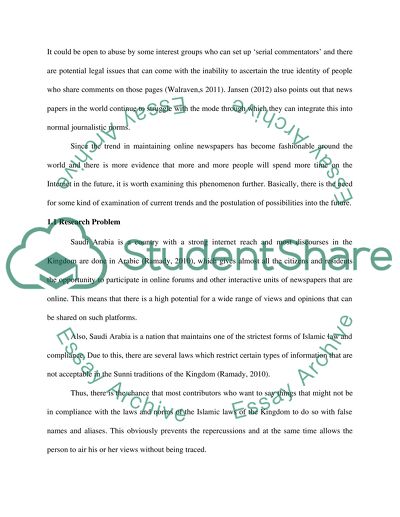Cite this document
(“The Usage and Significance of Aliases in Online Journalism: A study of Dissertation”, n.d.)
The Usage and Significance of Aliases in Online Journalism: A study of Dissertation. Retrieved from https://studentshare.org/journalism-communication/1457676-the-usage-and-significance-of-aliases-in-online-journalism-a-study-of-the-al-eqtisadiah-newspaper-saudi-arabia
The Usage and Significance of Aliases in Online Journalism: A study of Dissertation. Retrieved from https://studentshare.org/journalism-communication/1457676-the-usage-and-significance-of-aliases-in-online-journalism-a-study-of-the-al-eqtisadiah-newspaper-saudi-arabia
(The Usage and Significance of Aliases in Online Journalism: A Study of Dissertation)
The Usage and Significance of Aliases in Online Journalism: A Study of Dissertation. https://studentshare.org/journalism-communication/1457676-the-usage-and-significance-of-aliases-in-online-journalism-a-study-of-the-al-eqtisadiah-newspaper-saudi-arabia.
The Usage and Significance of Aliases in Online Journalism: A Study of Dissertation. https://studentshare.org/journalism-communication/1457676-the-usage-and-significance-of-aliases-in-online-journalism-a-study-of-the-al-eqtisadiah-newspaper-saudi-arabia.
“The Usage and Significance of Aliases in Online Journalism: A Study of Dissertation”, n.d. https://studentshare.org/journalism-communication/1457676-the-usage-and-significance-of-aliases-in-online-journalism-a-study-of-the-al-eqtisadiah-newspaper-saudi-arabia.


